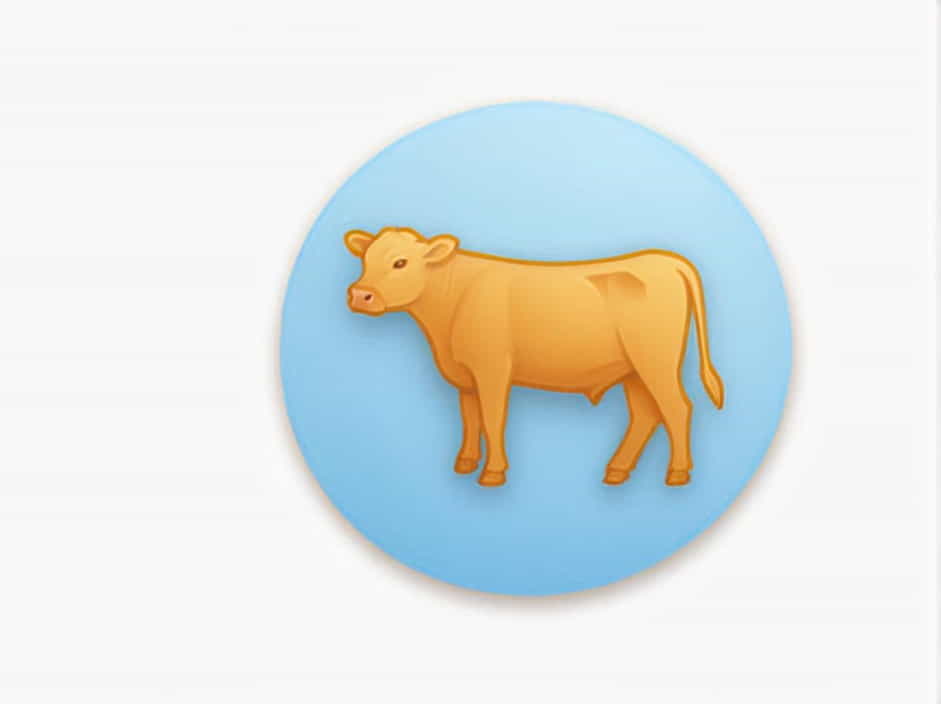Gangrenous mastitis is a severe and life-threatening udder infection in cattle. It is caused by bacterial pathogens such as Staphylococcus aureus, Escherichia coli, and Clostridium perfringens, leading to tissue necrosis, udder discoloration, and systemic illness. Without prompt treatment, this condition can cause high mortality rates and economic losses.
This topic explores the causes, symptoms, and effective treatment strategies for gangrenous mastitis in cattle.
Causes of Gangrenous Mastitis in Cattle
Gangrenous mastitis occurs when bacteria invade the mammary gland and produce toxins that cause tissue death (necrosis). Several factors contribute to its development:
-
Bacterial Infection – The most common pathogens are Staphylococcus aureus, Escherichia coli, and Clostridium perfringens.
-
Compromised Immune System – Cows with stress, poor nutrition, or metabolic diseases are more vulnerable.
-
Dirty Milking Practices – Contaminated milking equipment, dirty hands, and poor udder hygiene increase infection risks.
-
Udder Trauma – Wounds or injuries to the udder provide an entry point for bacteria.
-
Poor Housing Conditions – Damp, dirty bedding encourages bacterial growth and spread.
-
High Milk Production – High-producing dairy cows are at greater risk due to increased udder strain.
Symptoms of Gangrenous Mastitis in Cattle
Early detection is crucial to improve survival rates. Common symptoms include:
1. Udder Discoloration and Tissue Necrosis
-
The udder becomes dark blue, purple, or black, indicating tissue death.
-
Affected quarters may feel cold and firm due to reduced blood circulation.
2. Sudden Drop in Milk Production
-
Infected cows produce little to no milk.
-
The milk may be watery, bloody, or foul-smelling.
3. Systemic Illness
-
High fever, dehydration, and rapid heart rate.
-
Loss of appetite and lethargy.
4. Swelling and Pain in the Udder
-
The udder becomes hot, swollen, and extremely painful in the early stages.
-
As the disease progresses, it turns cold and insensitive due to necrosis.
5. Gangrene and Toxin Release
-
Bacteria release toxins into the bloodstream, causing shock and systemic infection (septicemia).
-
In severe cases, the cow may become unresponsive or collapse.
Diagnosis of Gangrenous Mastitis in Cattle
A veterinarian diagnoses gangrenous mastitis through:
-
Clinical Examination – Checking for udder discoloration, necrosis, and systemic illness.
-
Milk Culture and Sensitivity Test – Identifying the bacterial pathogen responsible.
-
Blood Tests – Detecting signs of infection and organ failure.
Effective Treatment Strategies for Gangrenous Mastitis
Gangrenous mastitis requires aggressive treatment to save the cow and prevent disease spread.
1. Systemic Antibiotic Therapy
Antibiotics are crucial for controlling bacterial infections. Commonly used antibiotics include:
-
Penicillin and Oxytetracycline – Effective against Gram-positive bacteria like Staphylococcus aureus.
-
Ceftiofur and Enrofloxacin – Broad-spectrum antibiotics targeting Gram-negative bacteria like Escherichia coli.
-
Ampicillin-Sulbactam – A combination antibiotic used in severe infections.
Antibiotics should be administered intravenously (IV) or intramuscularly (IM) as directed by a veterinarian.
2. Intravenous Fluid Therapy
Dehydrated cows require IV fluids with electrolytes to prevent shock and organ failure.
-
Ringer’s lactate or normal saline helps maintain hydration.
-
Glucose supplementation supports energy levels.
3. Anti-Inflammatory and Pain Management
Non-steroidal anti-inflammatory drugs (NSAIDs) help reduce fever, pain, and swelling. Common options include:
-
Flunixin meglumine (Banamine).
-
Meloxicam or Ketoprofen.
These medications improve comfort and recovery.
4. Udder Care and Wound Management
-
Frequent stripping of infected quarters helps remove toxins and dead tissue.
-
Applying topical antiseptics (iodine or chlorhexidine) prevents secondary infections.
-
If tissue necrosis is extensive, surgical removal of the dead tissue may be necessary.
5. Udder Amputation in Severe Cases
In extreme cases where the infection is localized but severe, surgical removal of the affected quarter may be required to save the cow. This procedure is rare but can be life-saving.
6. Supportive Care and Nutrition
-
Provide high-quality feed with vitamins (A, C, E) and minerals to boost immunity.
-
Offer soft, digestible feed if the cow refuses to eat.
-
Ensure clean water is always available.
7. Isolating Infected Cows
To prevent the spread of infection, isolate affected cows and thoroughly disinfect milking equipment and stalls.
Preventing Future Cases of Gangrenous Mastitis
Prevention is key to reducing economic losses and maintaining herd health.
1. Maintaining Proper Udder Hygiene
-
Wash and sanitize udders before and after milking.
-
Use disinfectant teat dips to prevent bacterial entry.
-
Ensure clean and dry bedding to minimize contamination.
2. Improving Milking Practices
-
Milking machines should be cleaned and serviced regularly to prevent bacterial growth.
-
Avoid over-milking or excessive vacuum pressure, which can cause teat damage.
3. Strengthening Cow Immunity
-
Provide balanced nutrition with adequate protein, vitamins, and minerals.
-
Reduce stress factors like overcrowding and sudden dietary changes.
-
Vaccinate against common bacterial infections if available.
4. Routine Health Monitoring
-
Check cows regularly for early signs of mastitis.
-
Conduct milk culture tests in high-risk herds.
5. Proper Dry Cow Therapy
- Administer long-acting intramammary antibiotics at drying-off to prevent infections during the dry period.
When to Call a Veterinarian
Seek immediate veterinary help if a cow shows:
-
Severe udder discoloration and necrosis.
-
Sudden drop in milk production and high fever.
-
Signs of systemic illness like weakness, dehydration, or collapse.
Gangrenous mastitis in cattle is a serious and often fatal disease that requires immediate intervention. Effective treatment involves antibiotics, IV fluids, pain management, udder care, and supportive nutrition.
Preventative measures such as good milking hygiene, proper nutrition, and routine health checks can reduce the risk of infection and protect dairy herds from economic losses. Early detection and rapid veterinary intervention are key to improving survival rates and ensuring herd productivity.
